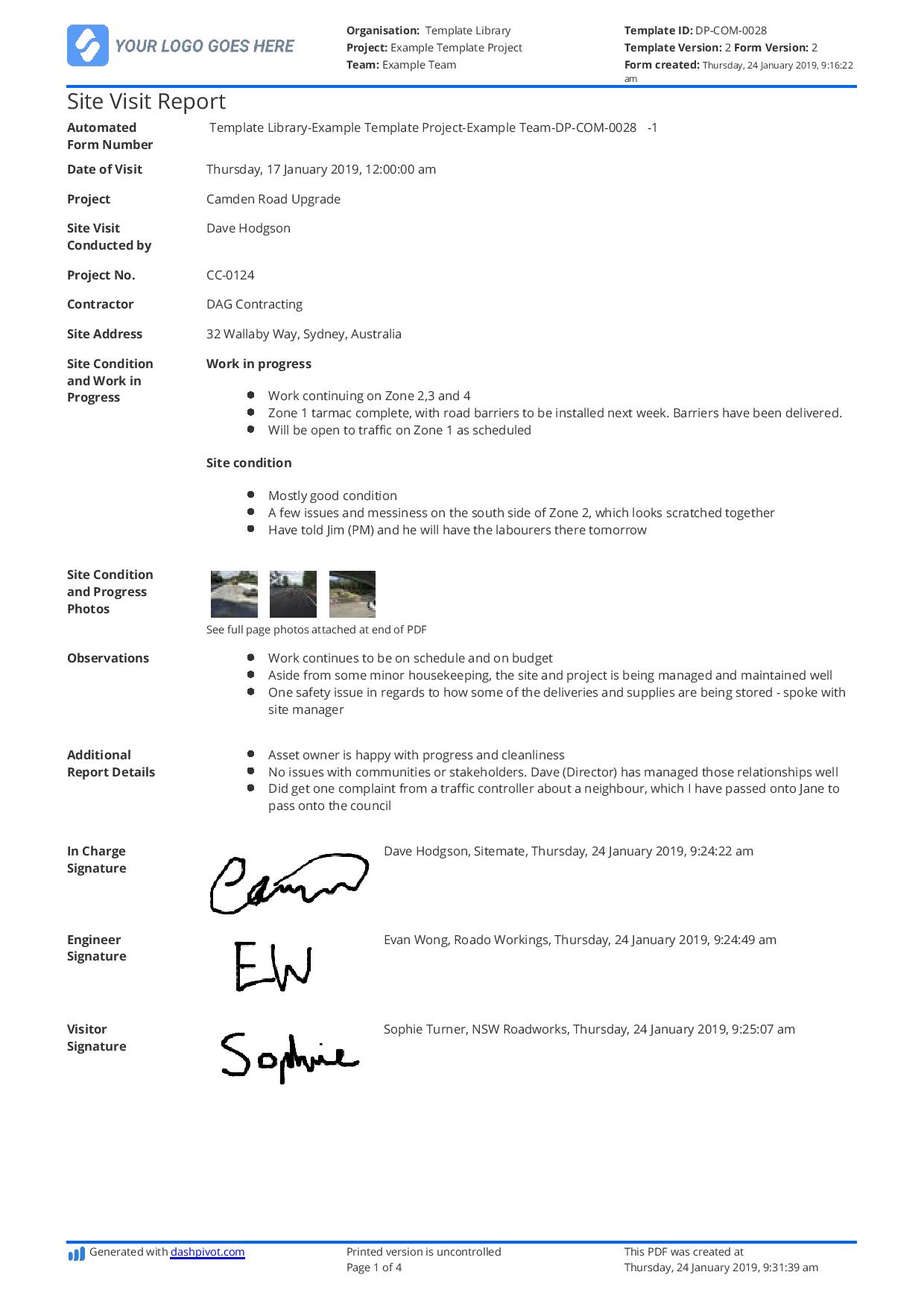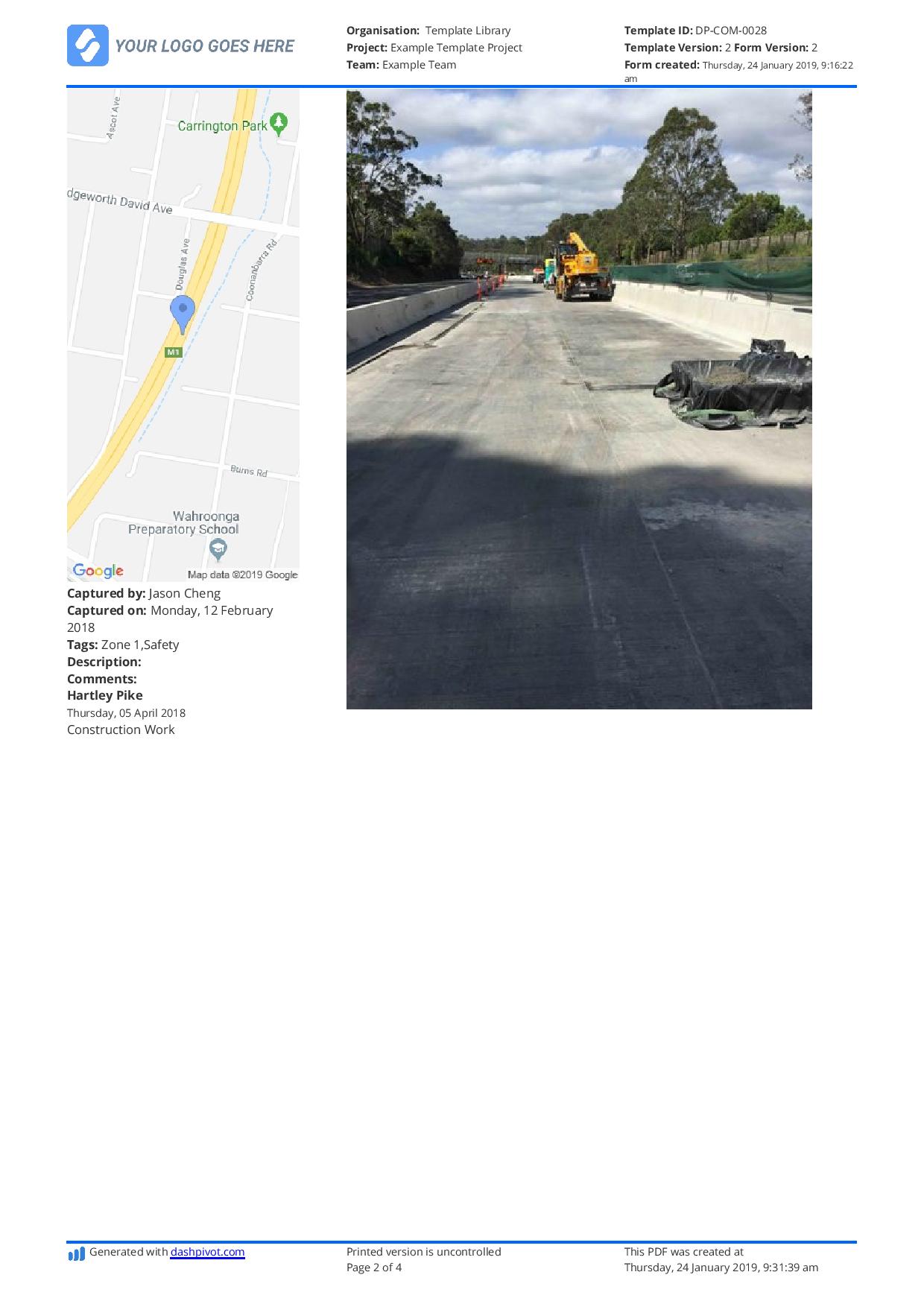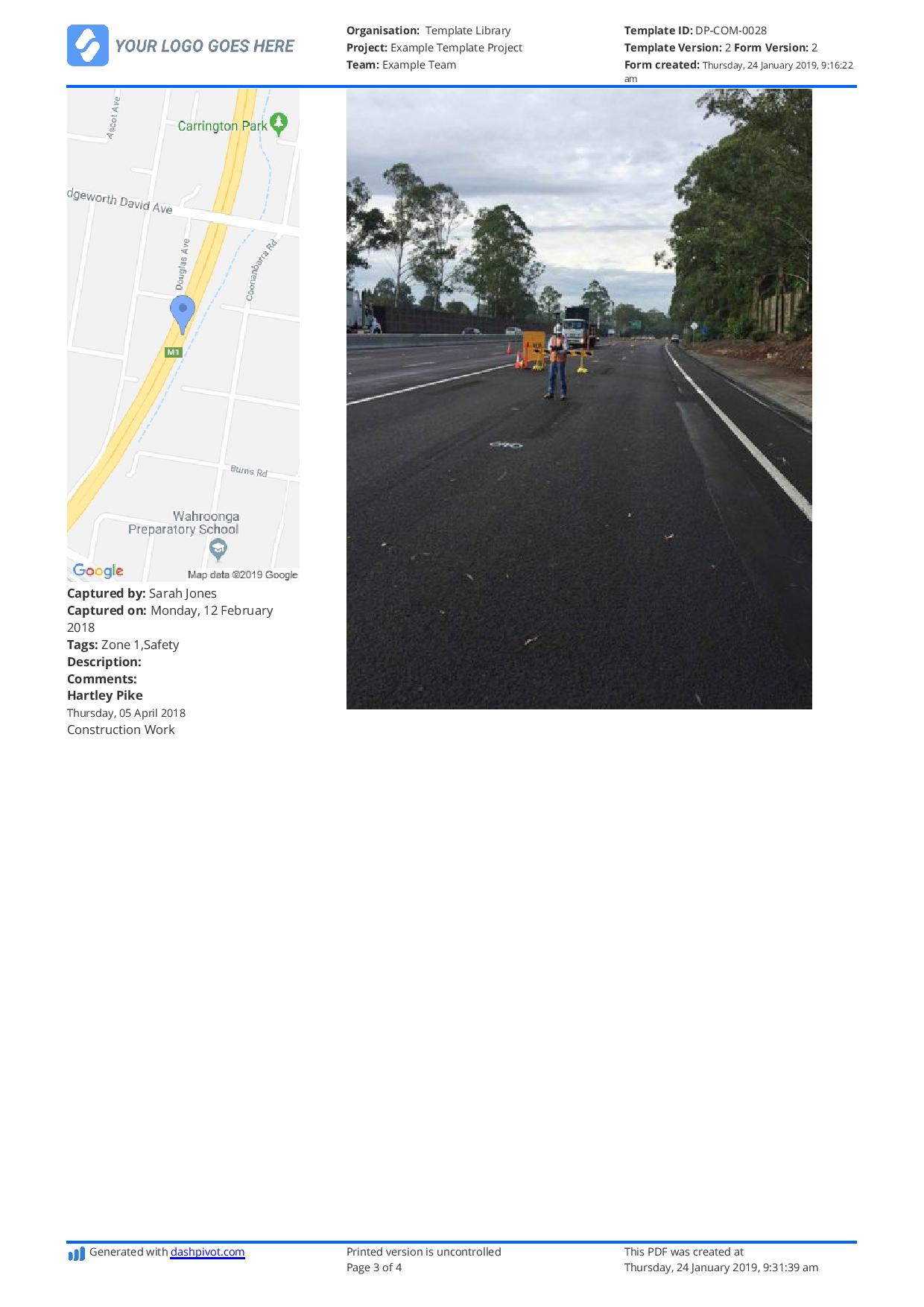Dashpivot article – Site Visit Report format for engineers
Site Visit Report Format for Engineers
In this article, we'll show you a site visit report format for engineers to ensure accurate and efficient documentation including the site conditions, observations, issues, and recommendations for effective project management and future reference.

Why Are Site Visit Reports Important for Engineers in Projects?
Engineers make sure that the technical side of a project is properly planned and designed, executed according to those plans, completed without complications, and compliant to regulations and standards. Along with other qualified personnel on site, engineers oversee the overall construction, installation procedures, and other operations. To perform their roles effectively and document what they need to, a site visit report for engineers is a crucial tool in this oversight role.
For a project oversight kind of role, engineers use a site visit report to document everything. They use it to monitor progress, follow through milestones, and check if the activities on site are according to schedule and standards.
Engineers do have specific aspects of their site visit reports vs. other site visit report formats.
To properly coordinate between teams like the design company, contractors, and managers, engineers use a site visit report to relay project details, issues, and recommendations. For premature issues and non-compliance, site visit reports allow engineers to document them and immediately implement corrective actions to maintain compliance.
Engineers and persons involved in the project are accountable for ensuring its success, and a site visit report is one of the key tools in achieving that. A site visit report is a formal and structured document used throughout the project and should
What is the Typical Site Visit Report Format for Engineers?
A formal and uniform structure for an engineer's site visit report makes it easier and more efficient for engineers to input data and fulfil the purpose of the visit successfully. A structured site visit report gives engineers clear and organised information to all persons involved in the project.
Having a structure makes it easier for the contents to read, and for stakeholders to understand the status of the project. It’s critical that the audience intended for the report are able to comprehend the contents of the report. Take note that a site visit report doesn’t necessarily have to be lengthy, but it’s the content that makes it important.
The title section should clearly indicate the official name of the project, the exact location of the site, date of visit, name of visitors, and for whom the report is intended for.
The introduction section should explain in a brief and concise manner the objectives of the visit, who were present during the visit, a short description about the current phase and its location in the timeline.
The site description section should clearly indicate the conditions of the site, and the ongoing minor and major work activities happening during the visit.
The observations section should write a detailed description of the tasks and phases of the project, the work quality or if there are any deviations from the plans and specifications, and resource (equipment and manpower) list.
The safety and compliance section should indicate any safety observations whether the personnel, equipment, or activities on site are compliant with the standards and regulations. If there are issues, hazards, and non-compliances, they should be specified under this section.
The photographs and visual documentations section is there to illustrate the activities, issues, hazards, or visualise anything that can’t be fully explained in words. If there are also relevant drawings or schematics, they should be included under this section.
The issues identified section includes problems and issues that caused delays, including defects and material issues.
The recommendations section contains the corrective actions to the issues, problems, hazards, and non-compliances observed during the visit.
The conclusion section is the summary of main findings and important parts of the visit. This also outlines the next steps that need to be done after the visit concludes.

Use this Engineering Site Visit Report format for free
How Can Engineers Structure Recommendations or Action Points in Reports?
Even for recommendations, it’s important to structure them in a way that’s understandable for all parties. It should be in a clear and actionable site visit format for engineers and other parties.
Firstly, recommendations should be categorised depending on the organisation. The categories could be “work progress”, “quality control”, “safety”, “compliance”, or others. It may also be ordered according to priority or importance.
The words being used should be clear and understandable. Recommendations should be feasible and actionable, indicating the exact issue and location. It’s important to assign the persons responsible for fulfilling the corrective actions and setting deadlines or timeframes in the recommendations section to ensure accountability.
Propose alternative solutions especially for complex issues. It’s also important to justify or provide reason for the recommendations and solutions being presented.
How Can Engineers Streamline Site Visit Reports Using Digital Tools?
To improve efficiency and allow engineers to input data faster, engineers should transition to digitised forms to reduce the time spent in filling out manual papers and potentially losing or forgetting them on site. Using Dashpivot, you and your team can create pre-filled templates and add common data fields that can be auto-filled to save time during the actual visit.
Input data using your mobile or tablet and instantly share the reports to persons involved. Reduce the risk of human errors like illegible handwriting or missing pages, to avoid miscommunication and tiresome sheets of papers. Errors like these contribute to misleading and uninformed decisions between parties.
Instantly share the digital reports to persons involved immediately without having to go back and forth with emails and physical papers that waste a lot of time and effort. Enhance the reporting process to hasten decision-making sessions. The documents are stored in your database where persons who have the authorisation can access anytime, anywhere, in real time.
Organise and manage data properly using the flexible folder structure Dashpivot offers. Give permission to certain individuals only to keep your documents safe and secure in your database. You and your team can quickly search through the database for specific reports by using dates and keywords. Improve efficiency in reviewing old reports in the project to make documentations and audits faster.
Leverage the features that help you and your team enhance efficiency and communication. Create your own site visit reports, use that all throughout the entire project duration, and streamline the workflow and reporting process. Engineers have project oversight and problem-solving roles, and integrating digital tools into reporting is one huge problem less.

Site diary template
Complete and organise your daily diaries more efficiently.

Meeting Minutes template
Capture, record and organise those meeting minutes.

Progress Claim template
Streamline and automate the progress claim process to get paid faster and look more professional.

